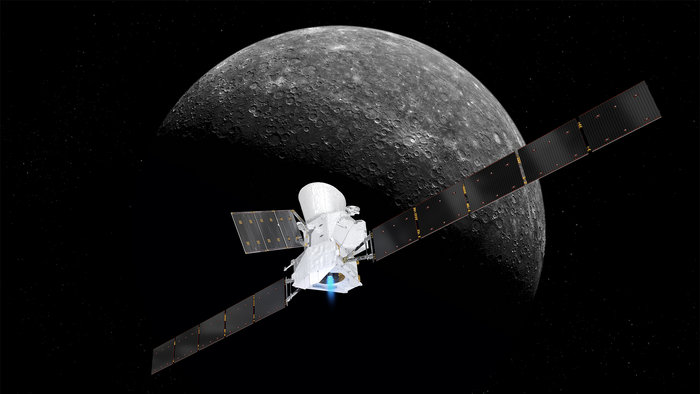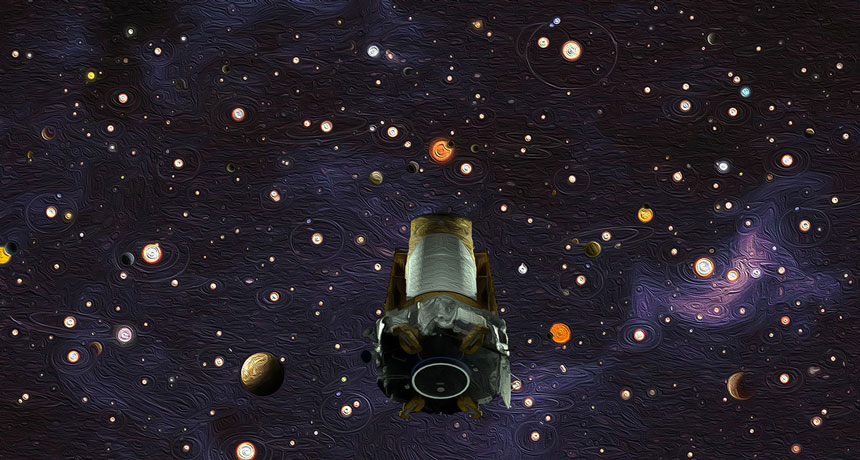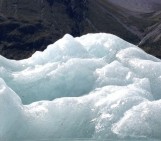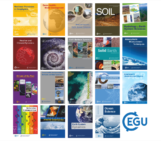
Drawing inspiration from popular stories on our social media channels, major geoscience headlines, as well as unique and quirky research, this monthly column aims to bring you the latest Earth and planetary science news from around the web.
Major story
In October, the UN Intergovernmental Panel on Climate Change (IPCC) released a landmark report and summary statement that detailed the severe consequences for our environment and society if global warming continues unabated. The special report, also known as the SR15, was compiled by 91 authors from 40 countries, and cites more than 6,000 peer-reviewed studies.
“There’s no doubt that this dense, science-heavy, 33-page summary is the most significant warning about the impact of climate change in 20 years,” said Matt McGrath an environment correspondent for BBC News.
The EGU announced its support of the IPCC report in a statement published last month. In this address, EGU President Jonathan Bamber said: “EGU concurs with, and supports, the findings of the SR15 that action to curb the most dangerous consequences of human-induced climate change is urgent, of the utmost importance and the window of opportunity extremely limited.”
The IPCC was first commissioned to produce this report by the UN Convention on Climate Change following the Paris agreement, where world leaders pledged to limit global warming to well below 2ºC above pre-industrial levels and “pursue efforts” towards 1.5ºC. The goal of the report was to better understand what it would take for the world to successfully meet this 1.5ºC target and what the consequences would be if we are unable to reach this goal.
The report illustrates the two different outcomes that would arise from limiting global warming to 1.5ºC or allowing temperatures to rise to 2ºC.
While a half-degree doesn’t come across like a pronounced difference, the report explains that additional warming by this degree could endanger tens of millions more people across the world with life-threatening heat waves, water shortages, and coastal flooding from sea level rise. This kind of warming would also increase the chances that coral reefs and Arctic sea ice in the summer would disappear. These are just a few of the impacts detailed in the report. Recently, Carbon Brief has also produced an interactive graphic that does a deep dive into how climate change at 1.5ºC, 2ºC and beyond will impact different regions and communities around the world.
It should be noted that while limiting warming to 1.5ºC is the better of the two pathways, it still isn’t optimal. For example, under this warming threshold, the authors of the report project that global sea levels would still rise, coral reefs would decline by 70-90%, and more than 350 million additional people would be exposed to severe drought.
https://twitter.com/KendraWrites/status/1049105676029644800
Furthermore, the report goes on to explain what action (and just how much of it) would be necessary to limit warming to 1.5ºC. An article from the Guardian perhaps put it best: “there’s one simple critical takeaway point: we need to cut carbon pollution as much as possible, as fast as possible.”
The report authors emphasise that limiting warming would require a massive international movement to reduce emissions and remove carbon dioxide from the atmosphere; and additionally this effort would need to happen within the next few years to avoid the most severe outcomes. They warn that if greenhouse emissions are still released at their current rate, the Earth’s temperature may reach 1.5ºC some time between 2030 and 2052, and reach more than 3ºC by 2100. Even more so, they concluded that the greenhouse gas reduction actions currently pledged by various countries around the world are still not enough to limit warming to 1.5ºC.
Measures to reach this temperature target include reducing global carbon dioxide emissions by 45% from 2010 levels by 2030, and reach a ‘net-zero’ by 2050. and making dramatic investments in renewable energy. They conclude that 70-35% of the world’s electricity should be generated by renewables like wind and solar power by 2050. By that same time, the coal industry would need to be phased out almost entirely.
Moreover, the authors say that we would need to expand forests and develop technology to suck carbon dioxide from the atmosphere. The report notes that climate action needs to be taken on an individual level as well, such as reducing the amount of meat we eat and time we spend on flying airplanes.
The authors report that we have the technology and means to limit warming by 1.5ºC, but they warn that the current political climate could make reaching this goal less likely.
“Limiting warming to 1.5ºC is possible within the laws of chemistry and physics but doing so would require unprecedented changes,” said Jim Skea, Co-Chair of IPCC Working Group III, in an IPCC press release.
Still have questions about the recent report? The IPCC has released a comprehensive FAQ and Carbon Brief has published an in-depth Q&A that addresses questions such as why the panel released the report, why adaptation is important, what the reaction has been, and what’s next.
What you might have missed

BepiColombo approaching Mercury. Credit: ESA/ATG medialab; Mercury: NASA/JPL
Last month the science media was also abuzz with a series of space agency news. On 20 October, the European-Japanese mission BepiColombo successfully launched from French Guiana, starting its seven-year long journey to Mercury, the smallest and least explored terrestrial planet in the Solar System. The probe is poised to be the third mission to travel to Mercury.
Once it arrives in 2025, the spacecraft will actually separate into two satellites, which will orbit the planet for at least one year. One satellite will investigate Mercury’s magnetic field while the other will take a series of measurements, including collecting data on the planet’s terrain, topography, and surface structure and composition. The researchers involved with the mission hope to learn more about Mercury’s origins and better understand the evolution of our solar system.
While one mission has started its journey, another’s has come to an end. Last month NASA’s planet-hunting Kepler space telescope has officially been retired after running out of fuel. Over its 9-year life span, the telescope has spotted more than 2,600 planets outside our solar system, many of which are possibly capable of sustaining life.
“As NASA’s first planet-hunting mission, Kepler has wildly exceeded all our expectations and paved the way for our exploration and search for life in the solar system and beyond,” said Thomas Zurbuchen, associate administrator of NASA’s Science Mission Directorate in Washington. “Not only did it show us how many planets could be out there, it sparked an entirely new and robust field of research that has taken the science community by storm. Its discoveries have shed a new light on our place in the universe, and illuminated the tantalizing mysteries and possibilities among the stars.”
However, even though Kepler’s planet-scoping days are over, NASA’s new space observatory, the Transiting Exoplanet Survey Satellite (TESS) mission, which launched in April 2018, will continue the search for habitable worlds.

NASA’s Kepler space telescope, shown in this artist’s concept, revealed that there are more planets than stars in the Milky Way galaxy. Image credit: NASA
Links we liked
- Thousands of Hours of Newly Released Audio Tell the Backstage Story of Apollo 11 Moon Mission
- Nasa photographs rectangular iceberg
- Oops, the Oldest Fossils Ever Found Might Be Just Rocks
- One PhD student’s journey in the discovery of sciart
The EGU story
Earlier in October, we announced the winners of the 2019 EGU awards and medals: 45 individuals who have made significant contributions to the Earth, planetary and space sciences and who will be honoured at the 2019 EGU General Assembly next April. We have also announced the winners of the Outstanding Student Poster and PICO (OSPP) Awards corresponding to the 2018 General Assembly, which you can find on our website. Congratulations to all!
This month, we also opened the call for abstracts for the EGU 2019 General Assembly. If you are interested in presenting your work in Vienna in April, make sure you submit your abstract by 10 January 2019, 13:00 CET. If you would like to apply for a Roland Schlich travel grant to attend the meeting, please submit your abstract no later than 1 December 2018. You can find more information on the EGU website.
Interested in science and art? After successfully hosting a cartoonist and a poet in residence at last year’s annual meeting, we are now opening a call for artists to apply for a residency at the EGU 2019 General Assembly. The deadline for applications is 1 December. You can find more information about the opportunity online here.
And don’t forget! To stay abreast of all the EGU’s events and activities, from highlighting papers published in our open access journals to providing news relating to EGU’s scientific divisions and meetings, including the General Assembly, subscribe to receive our monthly newsletter.




